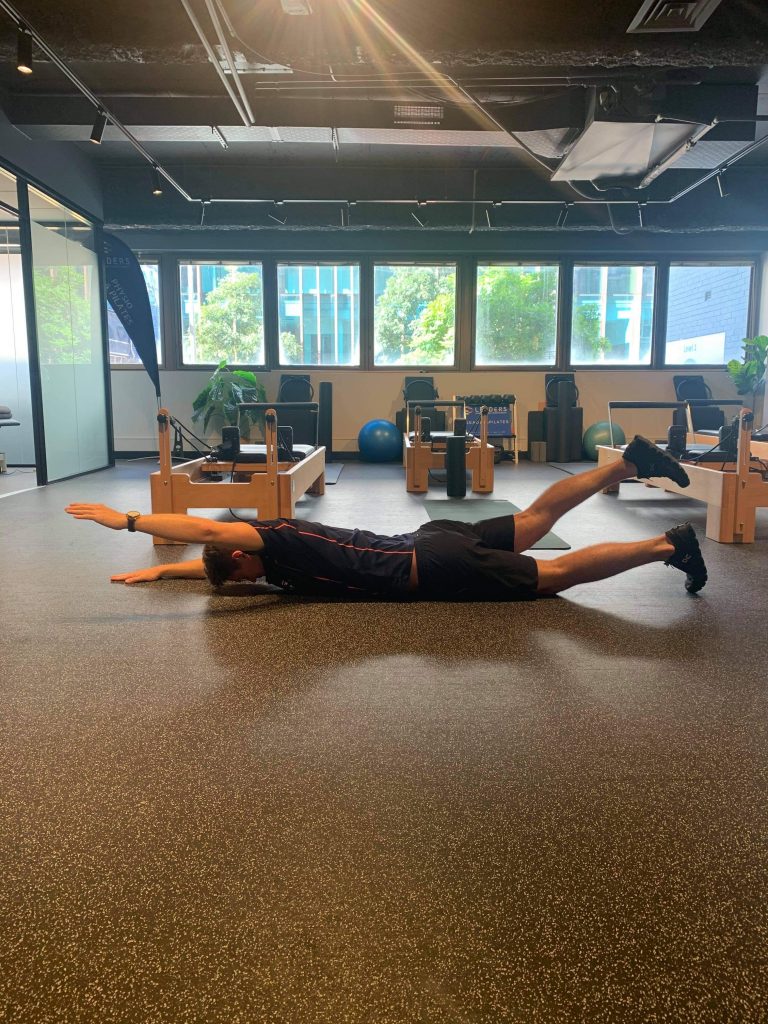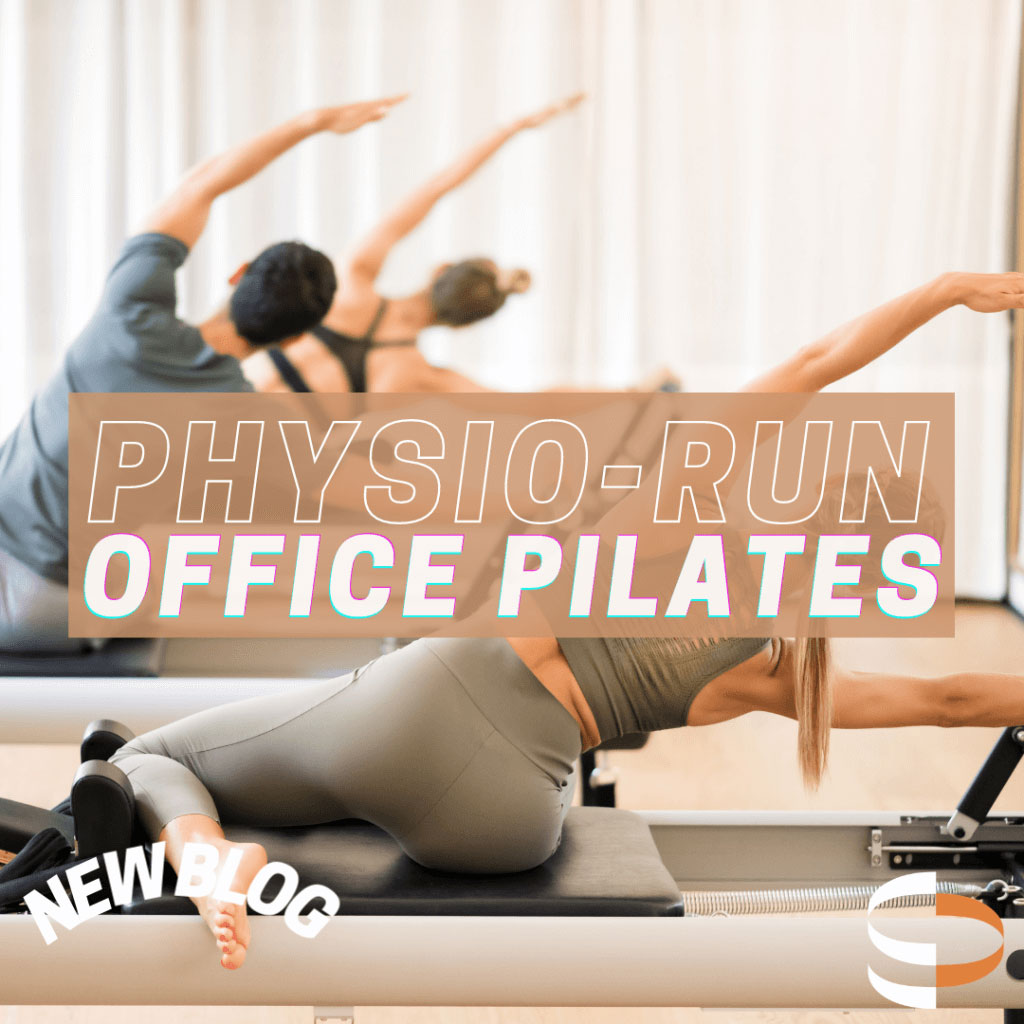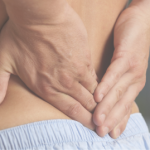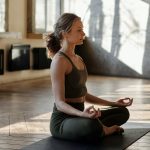Pilates for the Office
NECK PAIN … BACK PAIN … SHOULDER PAIN … HEADACHES!
These complaints are far more commonly heard in the office, than on a sporting field.
Contributing factors may include: Poor posture, poor workplace setup, lack of movement, chained to a desk, deadlines, limited space or standing desk availability.
We understand that it is difficult to change your work and workplace behaviour. This means the only other option is to change your BODY!
Strengthening the affected areas is one of the best ways to improve your ability to tolerate the workplace! And PILATES is one the BEST to do this!
WHAT IS PILATES
Pilates is basically an extension of Physiotherapy based rehab exercises. Much of the homework we send patients home with is incredibly similar to Pilates strength programs.
This is no coincidence! Both Physiotherapy and Pilates often aim to target the lesser-known stability and postural muscles, that are not easy to identify and can often be the root cause of people’s workplace pains.
Pilates was created by boxing and self-defence trainer Joseph Pilates, who used his technique to rehabilitate soldiers using old spring-bound hospital beds in WW1.
WHAT ARE STABILITY MUSCLES
In a nutshell, these are the muscles that fight against gravity to support your frame and help to control all movement. They are located all over the body, usually close to the larger joints or the spine. As a movement regulator, these muscles then need to operate for incredibly long periods at a time.
Interestingly when Astronauts return from space, their postural muscles are incredibly weak as their bodies have been starved of gravity for such a long time. They are then put through an intensive rehabilitative strength program to return to normal activity.
WHY CHOOSE PILATES?
Tying all this information together! We know that sitting or standing for long periods while working on a computer in an office environment will place the greatest strain on postural and stability muscles. Targeting these specific muscles at a gym or at home is incredibly difficult, without prior training or education.
Pilates AND Reformer Pilates (Pilates machine) is the easiest and most enjoyable way to strengthen your postural muscles to improve posture AND reduce the risk of office-based pain. The Pilates workout will help you will gain a better understanding of how your body moves and the best techniques to prevent pain while at work.
WHO TEACHES PILATES?
The health benefits of Pilates is making them more popular, and accessible. The class size, approach to exercise and experience of the trainer will vary depending on location. Additionally, the exercise directive is quite fluid, meaning your specific weaknesses may not be targeted.
For rehabilitation and maintenance of problem areas, clinically tailored Pilates is not only the best way to target your specific problems, it is also the most affordable way to review with a trained Physiotherapist and ensure that you are on track. Physiotherapists often encourage this method of exercise for those that feel they aren’t adhering to a home-based program and want to ensure success with their programs.
The Pilates classes in Brisbane City, at Leaders Sports & Spine Physiotherapy, are under two different streams; clinical and fitness. The Clinical Pilates classes are run by Pilates trained Physiotherapists experienced in preventing and treating workplace-based pain. Now is a great time to grab an office buddy and come to the clinic to talk to a Physio about how Pilates can help!
PILATES EXERCISE EXAMPLES
Pilates REFORMER
Seated Reverse Fly
- targets shoulder, lower / mid / upper spine stabilizer
- while sitting on the carriage, arms pull straps posteriorly while maintaining a neutral posture and scapula position.
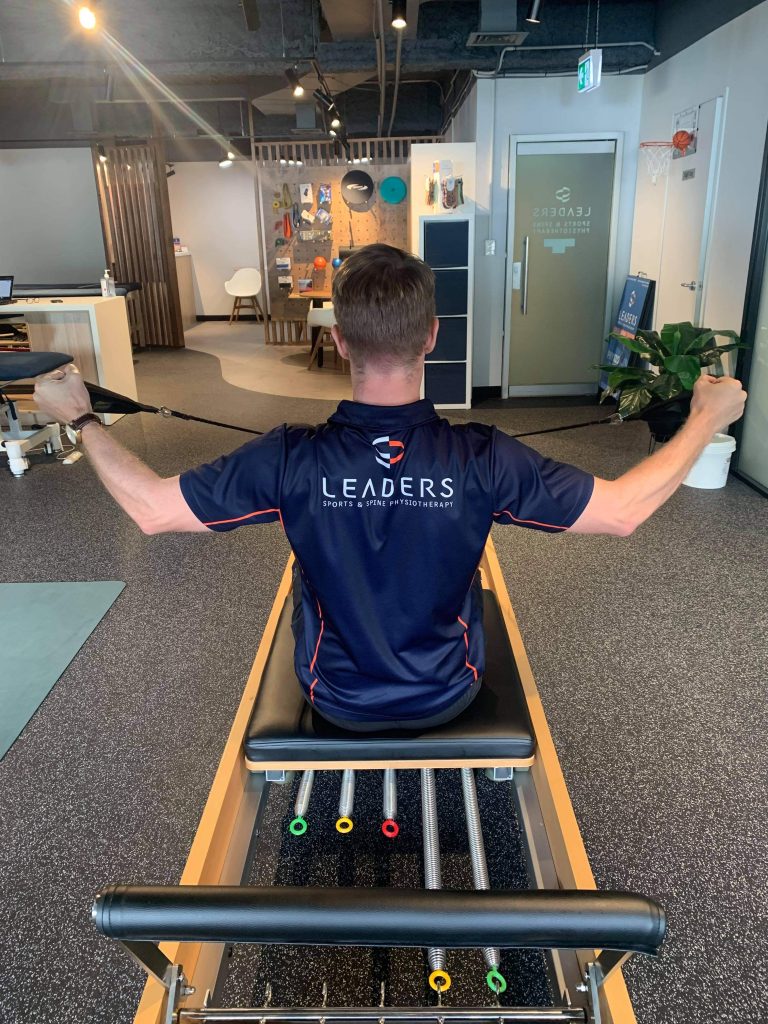
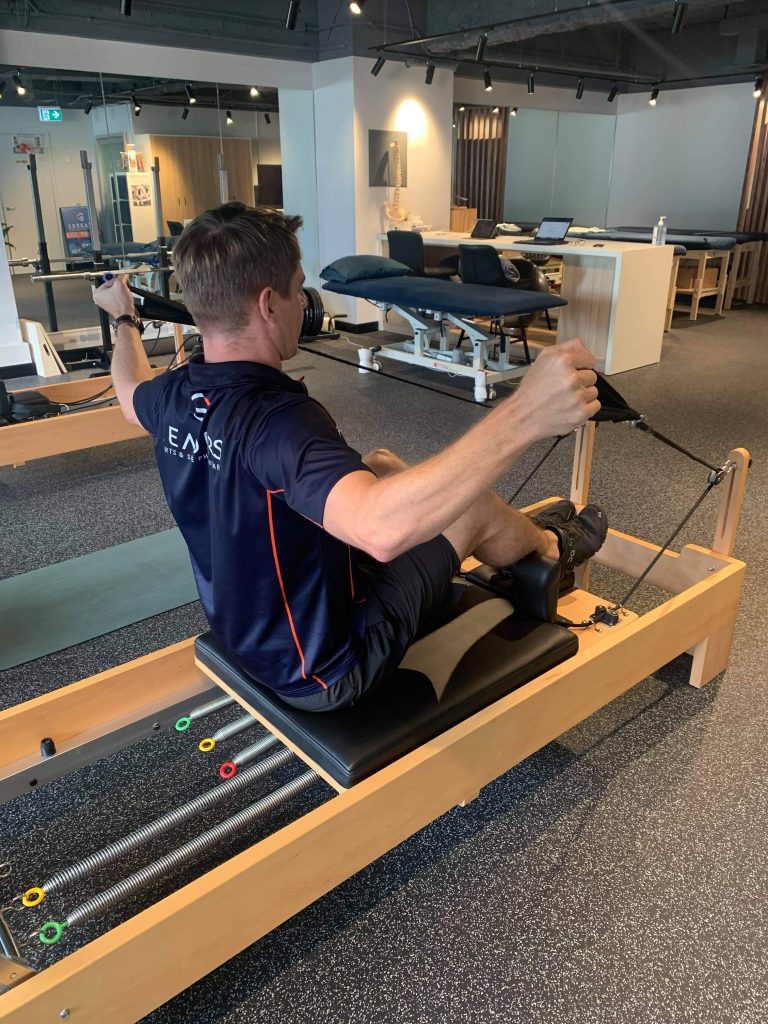
Arms in Straps Core Stability
- targets core / trunk stabilizers
- laying in table-top position, straps are pulled down to the bed increasing abdominal stabilizer contraction while counter balancing leg weight.
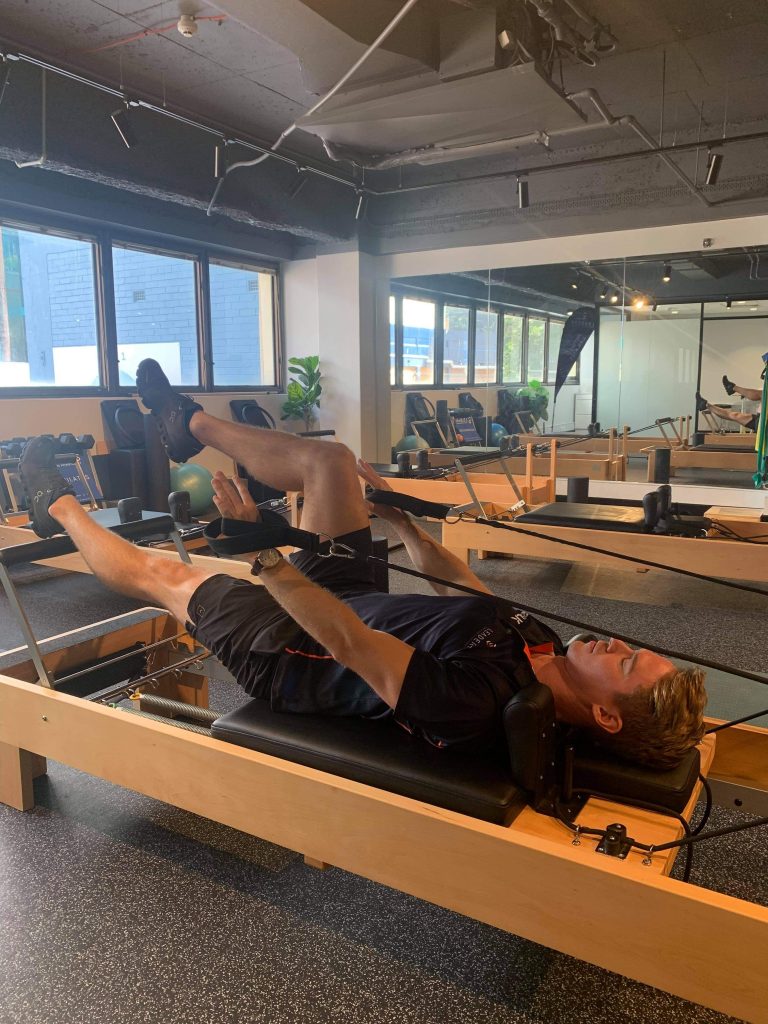
MAT
W-Ys
- targets shoulder and spine stabilizers
- laying on stomach or swiss ball, neutral spine maintained while arms start in W position before encouraging scapula upward rotation and elevation, toward the Y position and returning.
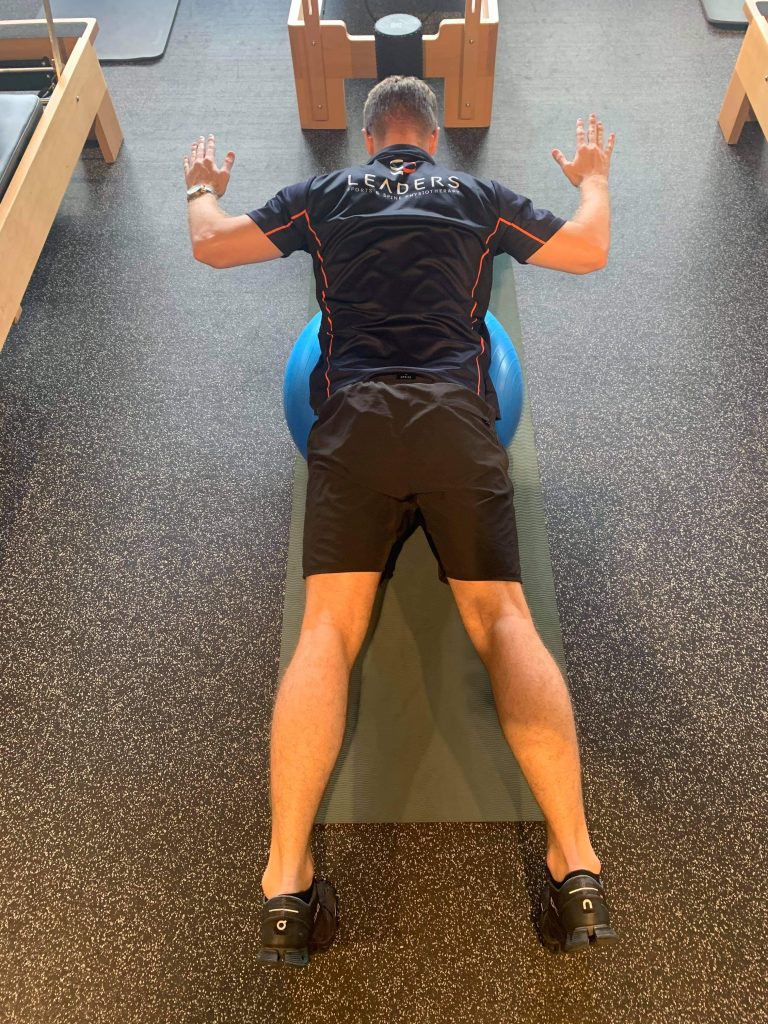
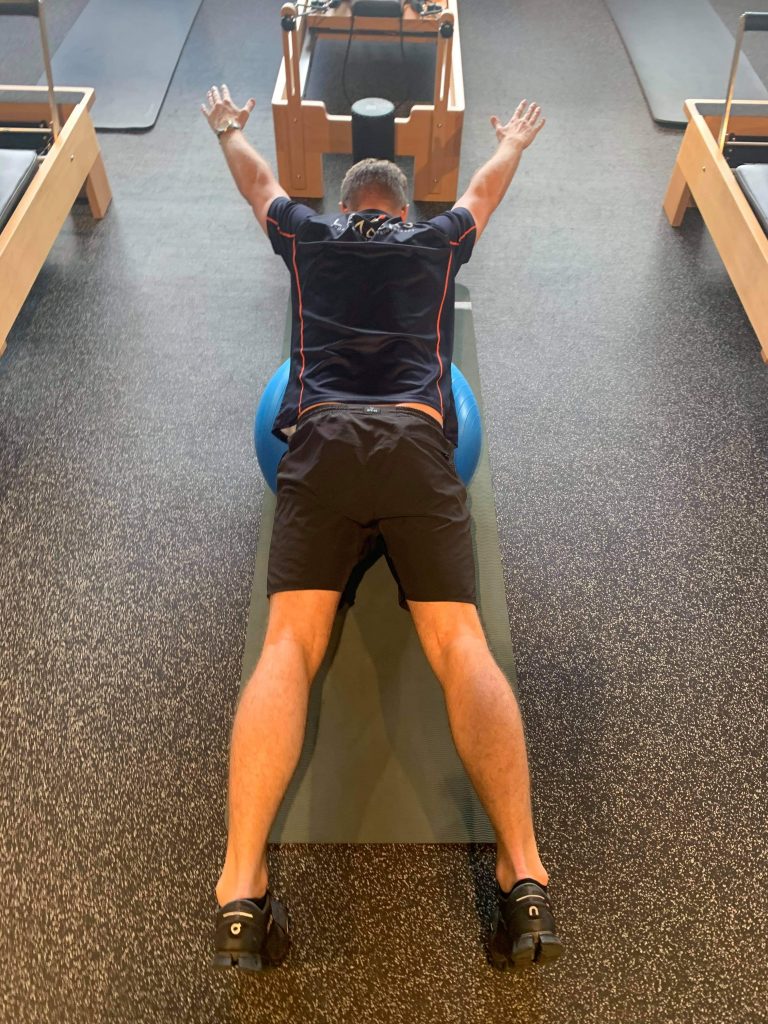
Superman
- targets shoulder, spine, and hip stabilizers
- laying on stomach, opposite straight arm and leg are raised vertically while maintaining a neutral spine.
